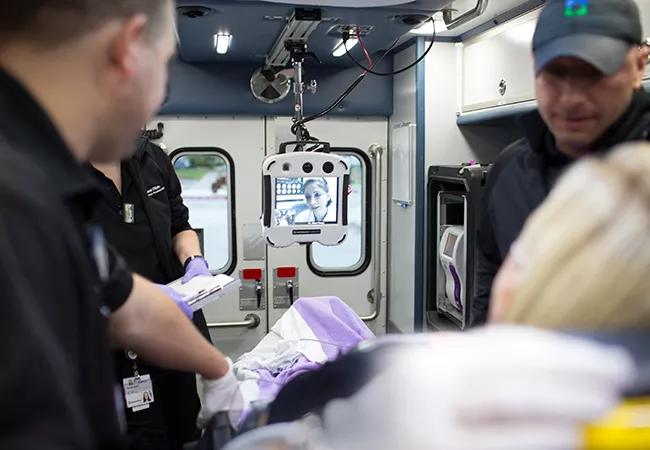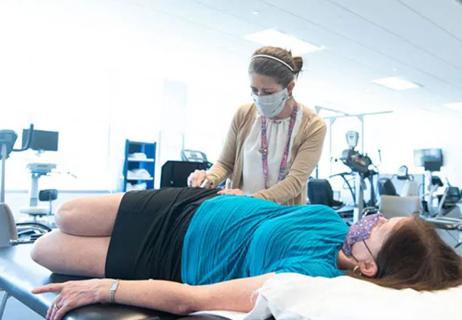New article reviews time-to-treatment data and looks ahead to emerging outcomes and cost studies

The future of mobile stroke units (MSUs) is bright, argue three Cleveland Clinic stroke neurologists in an article in the February 2018 issue of Endovascular Today.
Cleveland Clinic is a non-profit academic medical center. Advertising on our site helps support our mission. We do not endorse non-Cleveland Clinic products or services. Policy
“The improvement to time to treatment [with MSUs] is now well established in multiple data sets from around the world,” write M. Shazam Hussain, MD; Ken Uchino, MD; and Andrew Russman, DO, all with Cleveland Clinic’s Cerebrovascular Center.
One of those data sets is from Cleveland Clinic, which in July 2014 deployed one of the very first MSUs in the U.S. and has since reported significant reductions in time to treatment for patients with acute ischemic stroke managed in the Cleveland Clinic MSU compared with those managed in traditional emergency department settings.
The team’s Endovascular Today piece briefly reviews those results and similar findings from the earliest published experience with MSUs, which came from programs in Germany.
“The MSU concept is gaining traction in the United States and around the world,” Drs. Hussain, Uchino and Russman note, “with at least 15 active programs and many others in development.”
The authors also touch on the growing use of CT angiography by MSUs and on MSUs’ increasing role for field triage of patients with emergent large vessel occlusions for intra-arterial revascularization therapy.
They conclude with a look at the emerging wave of initial clinical outcomes data for patients managed on MSUs and a consideration of the nuanced cost-effectiveness issues around MSUs. “The incorporation of telemedicine may further improve cost-effectiveness [of MSUs],” they write, “as one physician can cover many MSUs as well as other duties rather than being committed to travelling with the ambulance.”
The Endovascular Today article is available here.

Q&A with Brain Trauma Foundation guideline architect Gregory Hawryluk, MD, PhD

Q&A with newly arrived autoimmune neurology specialist Amy Kunchok, MD

A neurocritical care specialist shares what’s spurring growth of this new evaluation approach

Focused ultrasound offers a newer alternative to deep brain stimulation

Prehabilitation can help improve outcomes after spine surgery

Get ready for central vein sign and optical coherence tomography

How these new drugs fit into practice two years out from their first approvals

A conversation on the state of physiatry with the AAPM&R’s Vice President